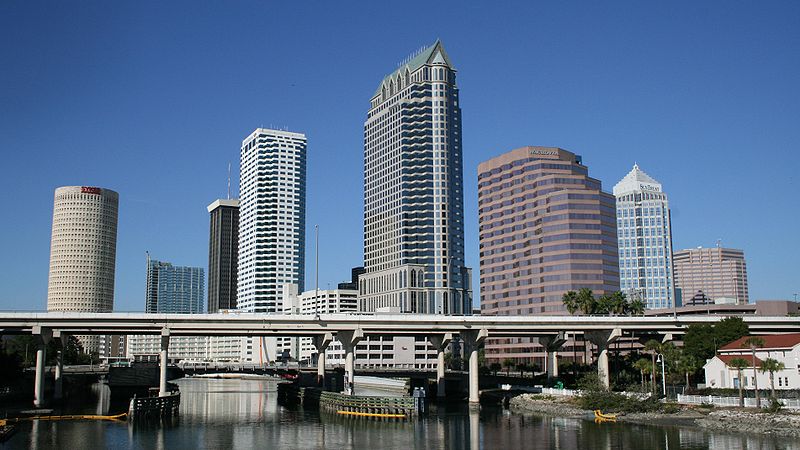
Tampa is a Gulf Coast Bay city in the U.S. state of Florida. It serves as the county seat for Hillsborough County. Tampa is located on the west coast of Florida. The population of Tampa in 2000 was 303,447. According to the 2009 estimates, the city’s population had grown to 343,890, making it the 54th largest city in the United States.
The current location of Tampa was once inhabited by various indigenous cultures, most recently the Tocobaga. It was spotted by Spanish explorers in the early 16th century, but there were no permanent American or European settlements in the area until 1824, when the US Army established a frontier outpost called Fort Brooke at the site of today’s Tampa Convention Center. The village of Tampa began as a small group of pioneers who settled near the fort for protection from the Seminole population in the area.
Today, Tampa is a part of the metropolitan area most commonly referred to as the Tampa Bay Area. For U.S. Census purposes, Tampa is part of the Tampa-St. Petersburg-Clearwater, Florida MSA. The four-county area is composed of roughly 2.7 million residents, making it the second largest metropolitan statistical area (MSA) in the state, and the fourth largest in the Southeastern United States, behind Miami, Washington, D.C., and Atlanta. The Greater Tampa Bay area has just over 4 million residents and generally includes the Tampa and Sarasota metro areas. The Tampa Bay Partnership and U.S. Census data showed an average annual growth of 2.47 percent, or a gain of approximately 97,000 residents per year. Between 2000 and 2006, the Greater Tampa Bay Market experienced a combined growth rate of 14.8 percent, growing from 3.4 million to 3.9 million and hitting the 4 million people mark on April 1, 2007.
Tampa has a number of sports teams, such as the Tampa Bay Buccaneers in the NFL, the Tampa Bay Lightning in the National Hockey League, the Tampa Bay Rays in Major League Baseball, and the FC Tampa Bay Rowdies in North American Soccer League (2010).
In 2008, Tampa was ranked as the 5th best outdoor city by Forbes. A 2004 survey by the NYU newspaper Washington Square News ranked Tampa as a top city for “twenty-somethings”. Tampa is ranked as a “high sufficiency” world city by Loughborough University and is one category away from becoming a Gamma world city. According to Loughborough, Tampa now ranks alongside other world cities such as Phoenix, Cologne, and Osaka. In recent years Tampa has seen a notable upsurge in high-market demand from consumers, signaling more wealth concentrated in the area. Tampa will host the 2012 Republican National Convention.
……………………………………………………………………………………..

I love reading about local history; the whole Pinellas County region has an extremely interesting history, from the original Tocobaga inhabitants to Spanish explorers, to pirates, to the Seminole people, to the US Army bases from World War 2.